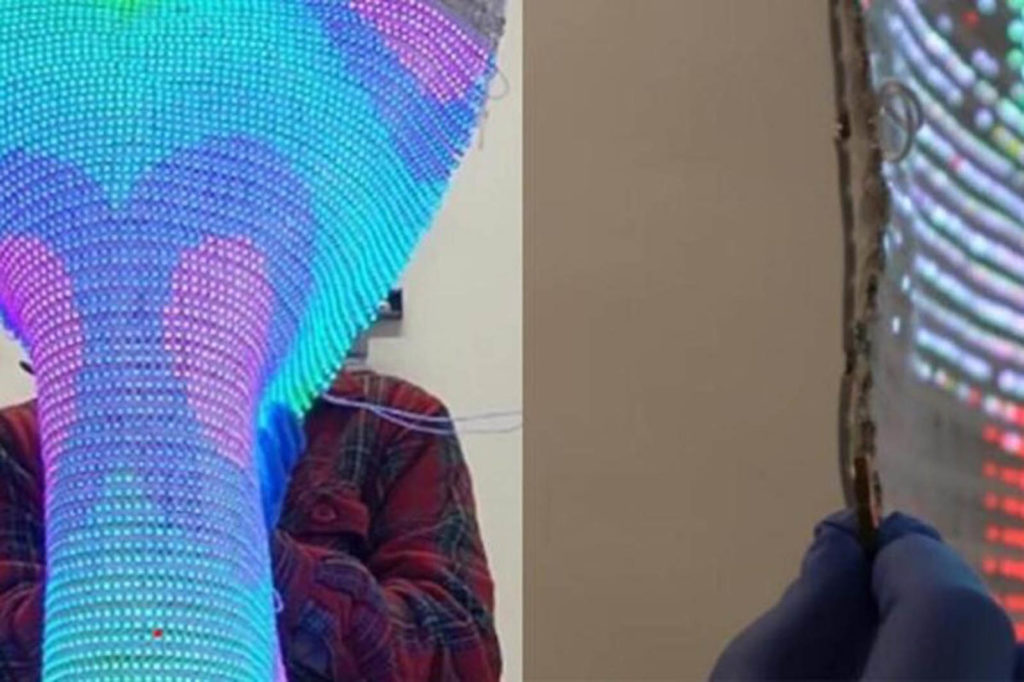
Smart textiles have become more sophisticated in the last few years but have remained somewhat limited in size and scope. Now a team of researchers, led by scientists at Cambridge University, has woven together a 46-inch textile display, loaded with LEDs, sensors and energy storage.
An additional capability of some significance is that the textile can be made using existing industrial manufacturing processes. The textile’s multi-functionality also makes it unique. The textile includes light, touch and temperature sensors, a radio frequency antenna, a biosensor module and an energy storage system, which can be activated through several input devices that are also fiber-based.
The resulting smart textile can display different images or colors based on input from those devices, and therefore could be made into touchscreen curtains, carpets that harvest energy as people walk across them, or shirts that light up in response to temperature changes. Because all of the electronic components in the new fabric are embedded in fibers, they can be woven or knitted into the size and shape that’s needed.
Components were first coated in a material to help them withstand extra stretching, and some were braided to improve their durability. Multiple components were connected using conductive adhesives and laser welding. These processes make a smart textile that can be produced at larger scales.
“By integrating fiber-based electronics, photonic, sensing and energy functionalities, we can achieve a whole new class of smart devices and systems,” said Luigi Occhipinti, co-lead researcher on the study. “By unleashing the full potential of textile manufacturing, we could soon see smart and energy-autonomous Internet of Things devices that are seamlessly integrated into everyday objects and many other sector applications.”
The research was published in Nature Communications. The researchers will next work on making the smart fabrics out of sustainable materials.
Source: Cambridge University, as reported in www.newatlas.com.
 TEXTILES.ORG
TEXTILES.ORG


